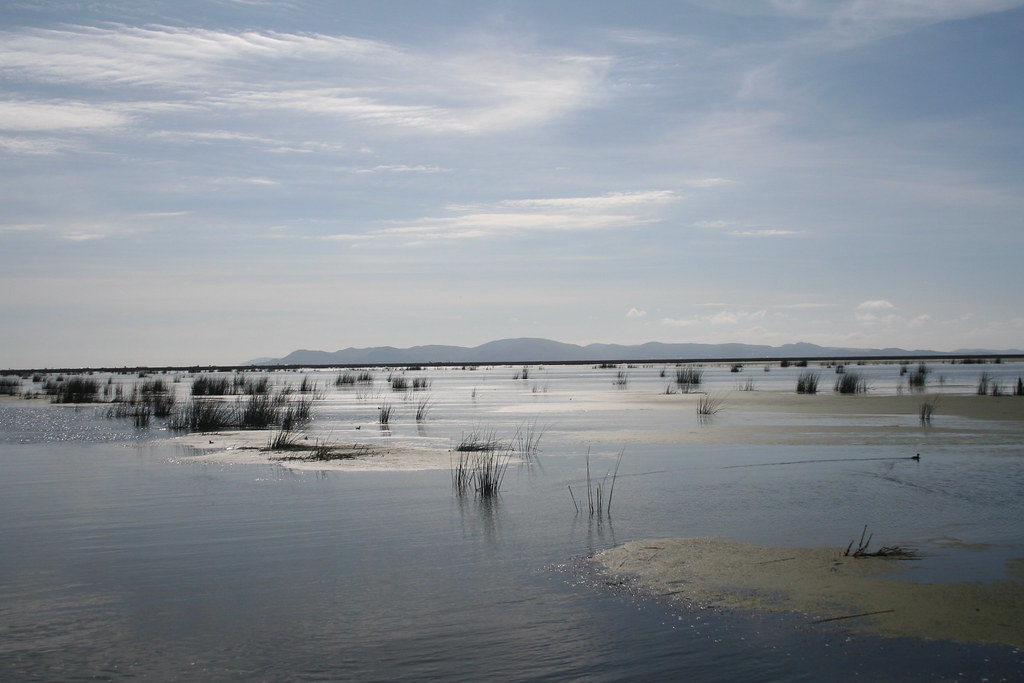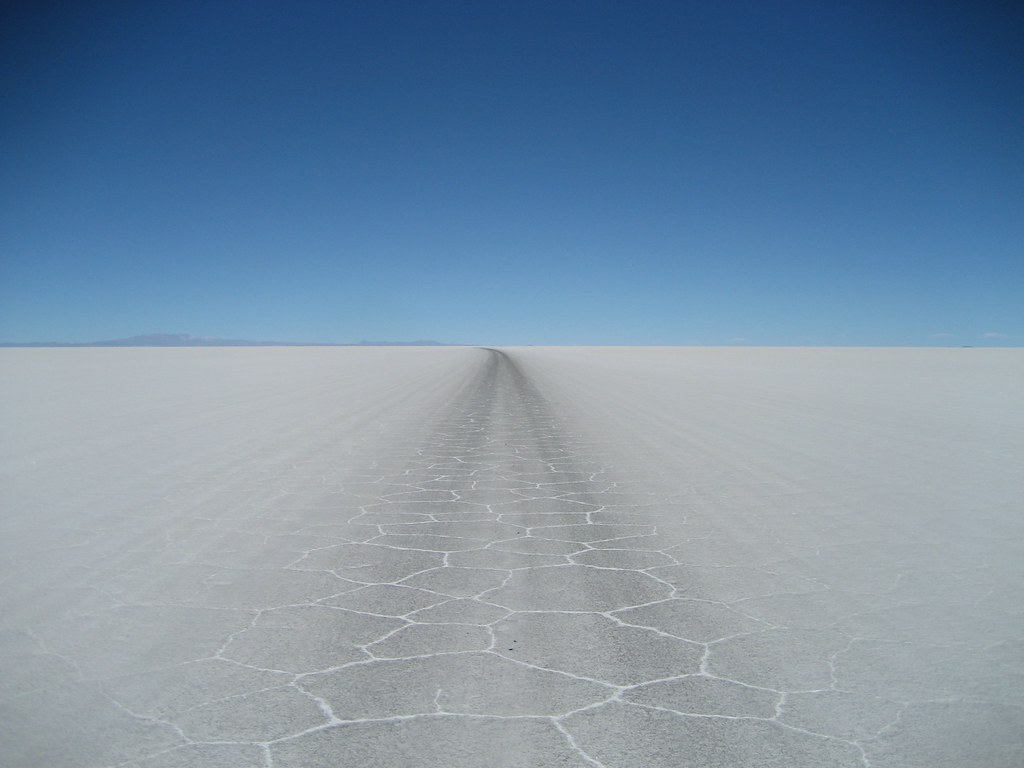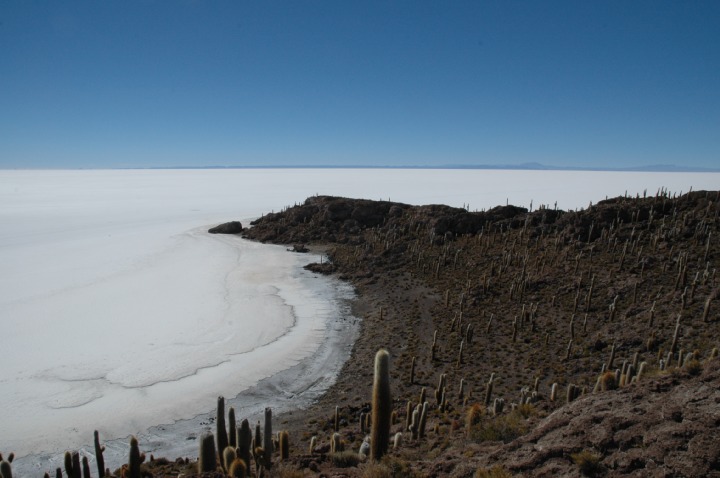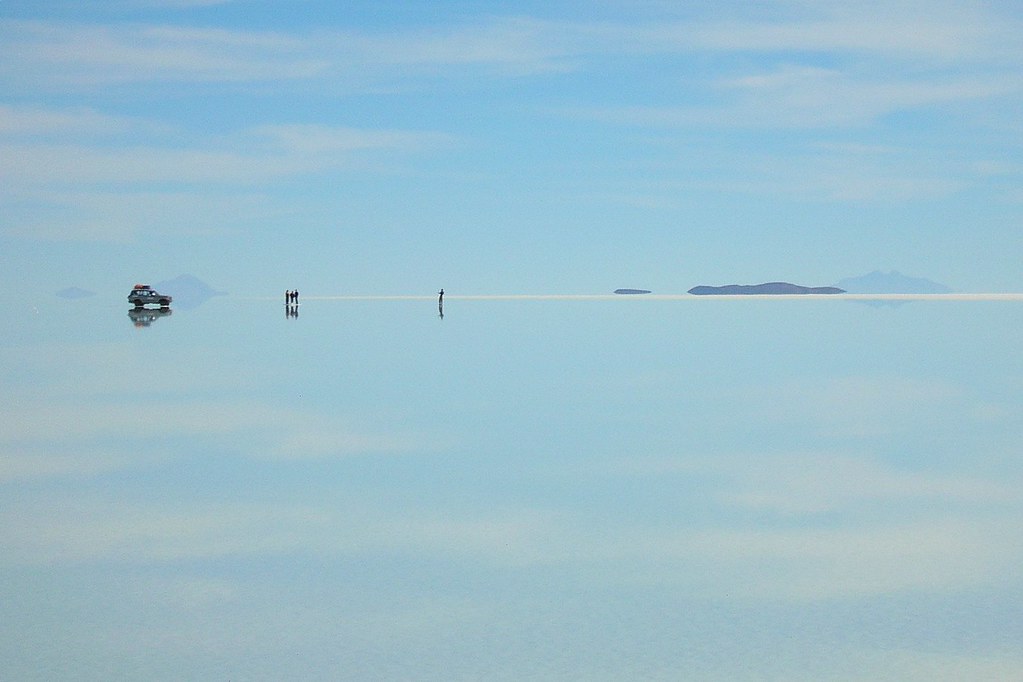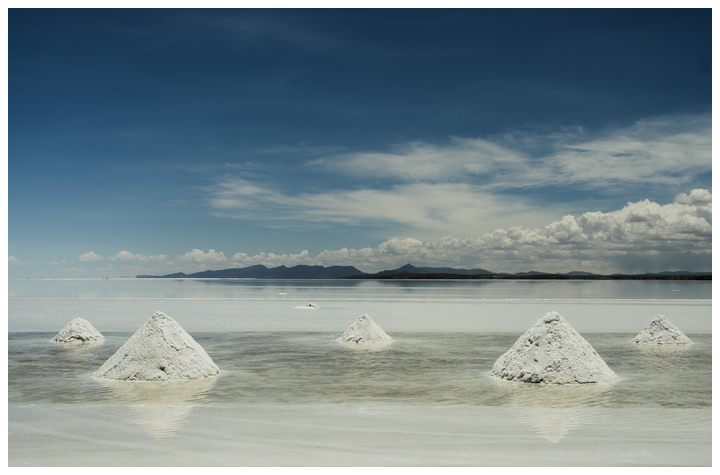 Lake Titicaca is a lake located on the border of Bolivia and Peru. It sits 3,812 m (12,507 ft) above sea level making it the highest commercially navigable lake in the world. By volume of water it is also the largest lake in South America.
Lake Titicaca is a lake located on the border of Bolivia and Peru. It sits 3,812 m (12,507 ft) above sea level making it the highest commercially navigable lake in the world. By volume of water it is also the largest lake in South America.
The lake is located at the northern end of the endorheic Altiplano basin high in the Andes on the border of Peru and Bolivia. The western part of the lake lies within the Puno Region of Peru, and the eastern side is located in the Bolivian La Paz Department.
The lake is composed of two nearly separate sub-basins that are connected by the Strait of Tiquina which is 800 m (2,620 ft) across at the narrowest point. The larger sub-basin, Lago Grande (also called Lago Chucuito) has a mean depth of 135 m (443 ft) and a maximum depth of 284 m (932 ft). The smaller sub-basin, Lago Huiñaimarca (also called Lago Pequeño) has a mean depth of 9 m (30 ft) and a maximum depth of 40 m (131 ft). The overall average depth of the lake is 107 m (351 ft).
Lake Titicaca is fed by rainfall and meltwater from glaciers on the sierras that abut the Altiplano. Five major river systems feed into Lake Titicaca—in order of their relative flow volumes these are: Ramis, Coata, Ilave, Huancané, and Suchez. More than 20 other smaller rivers empty into Titicaca, and the lake has 41 islands, some of which are densely populated.
credited to wikipedia and flickr users: elisharenne, Jim Shannon, abmiller99, Phillie Casablanca, Diva wannabe2003, robduncan11, andy961, Sam Judson, stephenk1977, keatssycamore, toonsarah


